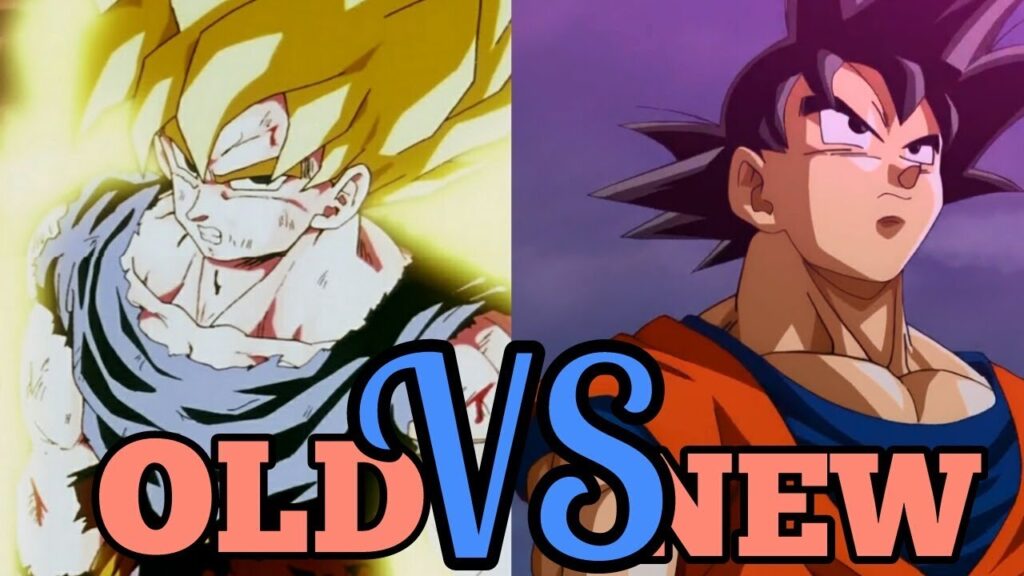The Evolution of Dragon Ball’s Animation Style: From Classic to Modern

Introduction
Dragon Ball, the iconic anime series created by Akira Toriyama, has captured the hearts of fans worldwide with its captivating storytelling and dynamic characters. Over the years, the animation style of Dragon Ball has undergone a significant evolution, transitioning from its classic origins to a modern aesthetic. In this article, we explore the evolution of Dragon Ball’s animation style, tracing its journey from the early days to the present.
The Classic Animation Style of Dragon Ball
Dragon Ball’s animation journey began in the 1980s with the original Dragon Ball series. The classic animation style of this era showcased a distinct and charming aesthetic, characterized by hand-drawn cels and vibrant colors. The animation quality, while not as refined as modern standards, possessed a certain charm that resonated with fans.
During this period, Dragon Ball relied on traditional animation techniques, with each frame painstakingly hand-drawn. The character designs and backgrounds had a simpler yet iconic appeal, capturing the essence of Akira Toriyama’s original manga. The classic animation style contributed to the series’ timeless quality and established its place in the hearts of fans around the world.
The Transition to Dragon Ball Z: A Shift in Animation Style
With the introduction of Dragon Ball Z, the series underwent a notable transition in its animation style. Dragon Ball Z showcased a more dynamic and action-oriented aesthetic, characterized by intense battles and power-ups. The animation quality improved, with smoother movements, detailed character designs, and more elaborate fight sequences.
The shift in animation style was driven by advancements in technology and the growing popularity of the series. Dragon Ball Z embraced a more polished look, incorporating computer-generated imagery (CGI) for special effects and utilizing more complex shading and lighting techniques. These changes elevated the visual experience of the series and set the stage for Dragon Ball’s continued evolution.
Dragon Ball Super: Embracing Modern Animation Techniques
Dragon Ball Super, the latest installment in the franchise, represents the pinnacle of Dragon Ball’s animation evolution. This modern era of Dragon Ball features a fusion of traditional hand-drawn animation and cutting-edge digital techniques, resulting in a visually stunning and dynamic series.
Dragon Ball Super takes advantage of advancements in computer-generated animation to deliver seamless and fluid fight sequences. The combination of traditional and digital animation allows for intricate details, vibrant colors, and enhanced special effects, further immersing viewers in the world of Dragon Ball.
Additionally, Dragon Ball Super features a more refined character design, with subtle changes in proportions and facial expressions. These modifications add depth and nuance to the characters, enhancing their visual appeal and conveying emotions more effectively.
The Impact of Animation Evolution on Dragon Ball
The evolution of Dragon Ball’s animation style has had a profound impact on the series and its fanbase. The classic animation style laid the foundation for the series’ enduring popularity, while Dragon Ball Z’s shift towards a more dynamic aesthetic raised the bar for action-packed anime.
Dragon Ball Super’s modern animation style has elevated the series to new heights, captivating audiences with its visually stunning sequences and attention to detail. The fusion of traditional and digital techniques has allowed for greater artistic expression and enhanced the overall viewing experience.
Moreover, the evolution of Dragon Ball’s animation style reflects the series’ ability to adapt and stay relevant in an ever-changing industry. It showcases the dedication of the animation teams in pushing the boundaries of visual storytelling and capturing the essence of the beloved characters and their epic battles.
Conclusion
The evolution of Dragon Ball’s animation style, from the classic hand-drawn cels to the modern fusion of traditional and digital techniques, has played a significant role in the series’ success. Each era of Dragon Ball’s animation has brought its unique charm and visual appeal, captivating fans across generations.
The classic animation style established the series’ timeless quality, while Dragon Ball Z elevated the action-packed sequences to new heights. Dragon Ball Super embraced modern animation techniques, pushing the boundaries of visual storytelling and delivering a visually stunning experience.
As Dragon Ball continues to evolve and captivate audiences, the animation style will undoubtedly remain a crucial element in bringing the series’ dynamic characters and exhilarating battles to life. The ongoing evolution of Dragon Ball’s animation ensures that the series remains a visual spectacle and a testament to the power of animation as a storytelling medium.
Read More
- Anniversary Flowers Online MiamiFlowersOnline Shop
- “Feuer Speiender Berg (umgangssprachlich) Vegas Bonus Program Code 2024 Aktionscode 55 Freispiele
- 10 Reward Nach Registrierung 10 Euro Gratis Casino
- Vulkan Vegas Casino Auszahlung Erfahrung ️ Standocs
- Vulkan Vegas Erfahrungen 2024: Betrug Oder Seriös? » Zum Test